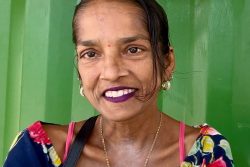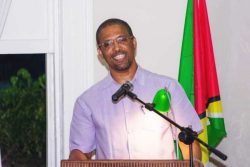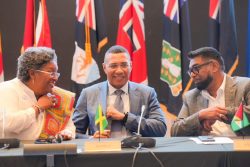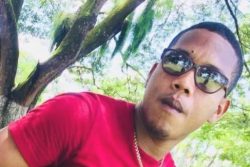The Justice Institute of Guyana recently hosted an intensive four-day legal training exercise for Region Eight communities on land rights and governance, among other topics.
According to press releases from Kato village and Justice Institute of Guyana, the Patamona and Macushi people of Region Eight completed four days of legal training on the Amerindian Act 2006 and their land rights, including demarcation. The participants included villagers, toshaos and councillors from communities including Bamboo Creek, Chiung Mouth, Itabac, Kaibarupai, Kamana, Kana-pang, Kopinang, Kuru-kaburu, Monkey Mountain, Orinduik, Paramakatoi, Taruka, Tussaneng and Waipa. It was hosted at Kato.
The focus of the training was the legal rights of Amerindian communities as enshrined in the Act. Training modules covered topics such as good governance, land rights, mining and control of Amerindian lands, the release from the Justice Institute said. Training started with an explanation of the Rule of Law and the role and functions of government. In this context, participants discussed the importance of building good relationships with national government, regional officials and state agencies such as the Guyana Police Force, the Guyana Geology and Mines Commission and the Guyana Forestry Commission. They also emphasised the importance of developing united and informed communities.
According to the release, the training sessions on land rights included explanations of state land and private land and the legal elements that make up Amerindian land title. Participants were also given a detailed explanation of the procedure for claiming Amerindian ownership of lands that are now legally held by the state, including the importance of culture and the spiritual relationship which Amerindians have with the land.
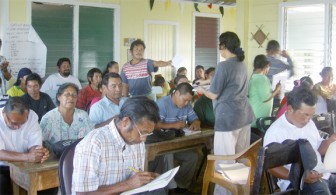
Discussions also touched briefly on native/aboriginal titles in other commonwealth countries. Many participants were also surprised to learn that in Canada Indian tribes that claim ownership have to prove that they were occupying a certain area of land when the British asserted sovereignty over it, whereas in Guyana, under the 2006 Act, an Amerindian community can claim land on the basis that that community has existed for 25 years.
Some participants asserted that the United Nations Declaration on the Rights of Indigenous Peoples (UNDRIP) protected their land rights. They were surprised to learn that UNDRIP is not a treaty under international law and does not give them any legal rights against the Government of Guyana. However, participants were encouraged to familiarise themselves with UNDRIP and to use it as a standard by which to assess national laws.
Several communities raised concerns about problems such as mining on their titled land without permission and the illegal influx of Brazilians who enter their land without permission. During the discussion on governance, participants also raised concerns about the lack of training for toshaos and village councillors on their legal responsibilities. A key concern was the lack of training for toshaos on their powers and duties as rural constables.
The release said the workshop was delivered through lectures, class work and group discussions. Some sessions were translated into Patamona. Participants also demonstrated what they had learnt through skits and problem-solving exercises based on real situations. The training was funded by the European Union under the European Instrument for Democracy and Human Rights.



